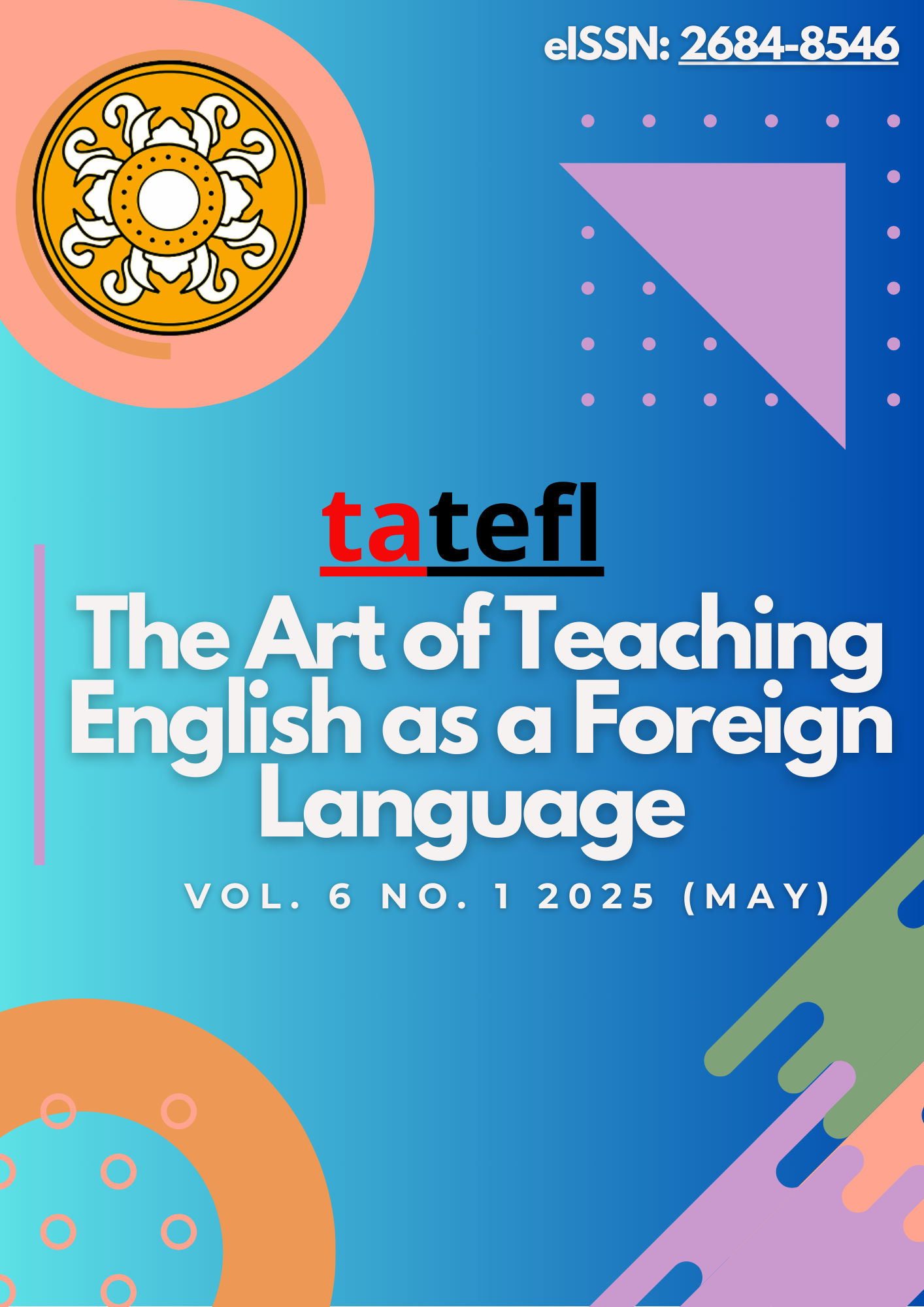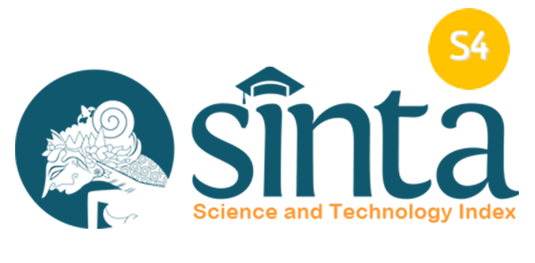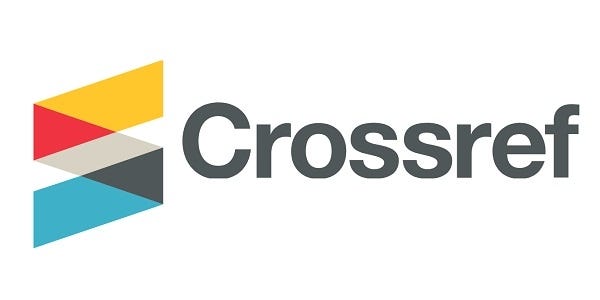The Use of Mobile Assisted Language Learning Among Professional Workers
DOI:
https://doi.org/10.36663/tatefl.v6i1.957Keywords:
MALL, Uses and Gratifications, Media Affordances, Professional WorkerAbstract
This research aims to discuss more deeply the utilization of Mobile Assisted Language Learning (MALL) technology in a foreign language learning experience specific to seven participants from the professional working class, including CEO, Trainee Coach, Finance Staff, and University Staff. The concept of Uses and Gratifications (UGT) and Media Affordances will be used as a guide to deepen the analysis of the data obtained using a qualitative approach. Data was collected through in-depth interviews with seven workers from various sectors who are actively or have used language learning apps. The results show that the use of MALL apps by working professionals is driven by several factors such as satisfaction (technology, entertainment, social, utilitarian, and content), interactive features and ease of access, and purpose of use. The purpose of use is not only for professional needs (improvement of work/academic skills), but also used for personal satisfaction in learning a foreign language
Downloads
References
Adeoye, M. A., Prastikawati, E. F., Oladimeji, R. M., & Olaifa, A. S. (2024). From overwhelm to success: Empowering educational personnel with microlearning and self-paced training to maximize performance and avoid burnout. International Journal of Educational Review, 6(1), 46–58. https://doi.org/10.33369/ijer.v6i1.31228 DOI: https://doi.org/10.33369/ijer.v6i1.31228
Agung, B. (2024). Pemanfaatan smartphone dalam pendidikan. Guepedia.
Ahmed, S. K., Mohammed, R. A., Nashwan, A. J., Ibrahim, R. H., Abdalla, A. Q., Ameen, B. M. M., & Khdhir, R. M. (2025). Using thematic analysis in qualitative research. Journal of Medicine, Surgery, and Public Health, 6. https://doi.org/10.1016/j.glmedi.2025.100198 DOI: https://doi.org/10.1016/j.glmedi.2025.100198
Akhter, S., Javed, M.K., Shah, S. Q., & Javaid, A. (2021). Highlighting the advantages and disadvantages of E-Learning. Psychology and Education, 58(5), 1607-1614.
Alakrash, H. M., & Razak, N. A. (2021). Technology-based language learning: Investigation of digital technology and digital literacy. Sustainability (Switzerland), 13(21). https://doi.org/10.3390/su132112304 DOI: https://doi.org/10.3390/su132112304
Alrajafi, G. (2021). The use of English in Indonesia: Status and influence. Journal of Literature and Linguistics, 1(1), 1–10. https://doi.org/10.36269/sigeh.v1i1.355 DOI: https://doi.org/10.36269/sigeh.v1i1.355
Anjaniputra, A. G., & Salsabila, V. A. (2018). The merits of Quizlet for vocabulary learning at tertiary level. Indonesian EFL Journal, 4(2), 1–11. https://doi.org/10.25134/ieflj.v4i2.1370 DOI: https://doi.org/10.25134/ieflj.v4i2.1370
Arvanitis, P., & Krystalli, P. (2021). Mobile-assisted language learning (MALL): Trends from 2010 to 2020 using text analysis techniques. European Journal of Education, 4(1), 13–22. https://doi.org/10.26417/461iaw87u DOI: https://doi.org/10.26417/ejls-2019.v5i1-191
Azhari, D., Alifahsyahri, L., Sinaga, R. T., Santika, S. D. B., Sipayung, V. P. B., Maulani, W. R., & Wahyu, A. (2024). Dampak positif edukasi masyarakat di era digital. Sanskara Ilmu Sosial Dan Humaniora, 1(2), 76–79. DOI: https://doi.org/10.58812/sish.v2i02.545
Cakmak, F. (2019). Mobile learning and mobile-assisted language learning in focus. Language and Technology. Language and Technology, 1(1), 30–48.
Chen, C., Huang, J., & Hsiao, Y. (2010). Knowledge management and innovativeness: The role of organizational climate and structure. International Journal of Manpower, 31(8), 848–870. https://doi.org/10.1108/01437721011088548 DOI: https://doi.org/10.1108/01437721011088548
Dewanthi, F., Marsakawati, N. P. E., & Sari, R. A. (2024). Text-based language teaching flipbook for guest relation officer to enhance students multimodal literacy. The Art of Teaching English as a Foreign Language (TATEFL), 5(2), 124–136. https://doi.org/https://doi.org/10.36663/tatefl.v5i2.759 DOI: https://doi.org/10.36663/tatefl.v5i2.759
Elaish, M. M., Ghani, N. A., Shuib, L., & Al-Haiqi, A. (2019). Development of a mobile game application to boost students’ motivation in learning English cocabulary. IEEE Access, 7, 13326–13337. https://doi.org/10.1109/ACCESS.2019.2891504 DOI: https://doi.org/10.1109/ACCESS.2019.2891504
Evans, S. K., Pearce, K. E., Vitak, J., & Treem, J. W. (2017). Explicating affordances: A conceptual framework for understanding affordances in communication research. Journal of Computer-Mediated Communication, 22(1), 35–52. https://doi.org/doi:10.1111/jcc4.12180 DOI: https://doi.org/10.1111/jcc4.12180
Faozi, F. H., & Handayani, P. W. (2023). The antecedents of mobile-assisted language learning applications continuance intention. Electronic Journal of E-Learning, 21(4), 299–313. https://doi.org/10.34190/ejel.21.4.2744 DOI: https://doi.org/10.34190/ejel.21.4.2744
Fatimah, A. N. (2025). Learning through digital media: Opportunities and challenges among Indonesian citizens. In 5th Annual Civic Education Conference (5th ACEC 2024). Atlantis Press. https://doi.org/10.2991/978-2-38476-372-6_4 DOI: https://doi.org/10.2991/978-2-38476-372-6_4
Fatimah, A. N., Imsa, M. A., Soegiarto, A., & Hadinayu, A. (2024). Optimalisasi pengalaman belajar pada program pelatihan daring melalui adaptasi alat ukur e-learning learning experience. Jurnal Pembelajaran Pemberdayaan Masyarakat (JP2M), 5(4), 957–967. https://doi.org/10.33474/jp2m.v5i4.22314 DOI: https://doi.org/10.33474/jp2m.v5i4.22314
Fatimah, A. N., Imsa, M. A., Soegiarto, A., & Oktiara, S. L. (2024). E-learning learner experience pada pengguna mobile assisted language learning. Risenologi, 9(2), 38–47. https://doi.org/10.47028/risenologi.v9i2.748 DOI: https://doi.org/10.47028/risenologi.v9i2.748
Fatimah, A. N., & Salamah, U. (2020). Mobile instant messaging for mobile learning activity: Use of WhatsApp group as a mobile learning platform in Anak Pintar Community. Joint proceedings of the 3rd International Conference on Intervention and Applied Psychology (ICIAP 2019) and the 4th Universitas Indonesia Psychology Symposium for Undergraduate Research (UIPSUR 2019), 328–340. https://doi.org/10.2991/assehr.k.201125.027 DOI: https://doi.org/10.2991/assehr.k.201125.027
Fithriani, R. (2021). The utilization of mobile-assisted gamification for vocabulary learning: Its efficacy and perceived benefits. CALL-EJ, 22(3), 146–163.
Fox, N. J., & Ramazanoglu, C. (2008). Postpositivism. The SAGE encyclopedia of qualitative research methods. https://doi.org/10.4135/9781412963909.n332 DOI: https://doi.org/10.4135/9781412963909.n332
Gao, B. (2023). A uses and gratifications approach to examining users’ continuance intention towards smart mobile learning. Humanities and Social Sciences Communications, 10(1), 1–13. https://doi.org/10.1057/s41599-023-02239-z DOI: https://doi.org/10.1057/s41599-023-02239-z
Gao, T., Tian, Y., Zhu, Z., & Sun, D.-W. (2020). Modelling, responses and applications of time-temperature indicators (TTIs) in monitoring fresh food quality. Trends in Food Science & Technology, 99, 311–322. https://doi.org/10.1016/j.tifs.2020.02.019 DOI: https://doi.org/10.1016/j.tifs.2020.02.019
Gibson, J. J. (1979). The ecological approach to visual perception. Houghton, Mifflin and Company.
Griffin, E., Ledbetter, A., & Sparks, G. G. (2018). A first look at communication theory (10th ed.). McGraw-Hill.
Hardyansyah, A. M., Syam, U. K., & Muhsin, M. A. (2021). Analysis students’ perception of using mobile assisted language learning (MALL) in reading class. IDEAS: Journal on English Language Teaching and Learning, Linguistics and Literature, 9(2), 12–127. https://doi.org/10.24256/ideas.v9i2.2225 DOI: https://doi.org/10.24256/ideas.v9i2.2225
Jiao, Z., Li, C., & Chen, J. (2022). Knowledge platform affordances and knowledge collaboration performance: The mediating effect of user engagement. Frontiers in Psychology, 13. https://doi.org/10.3389/fpsyg.2022.1041767 DOI: https://doi.org/10.3389/fpsyg.2022.1041767
Keshav, M., Julien, L., & Miezel, J. (2022). The role of technology in era 5.0 in the development of Arabic Language in the world of education. Journal International of Lingua and Technology, 1(2), 79–98. https://doi.org/10.55849/jiltech.v1i2.85 DOI: https://doi.org/10.55849/jiltech.v1i2.85
Lee, J., Song, H. D., & Hong, A. J. (2019). Exploring factors, and indicators for measuring students’ sustainable engagement in e-learning. Sustainability (Switzerland), 11(4). https://doi.org/10.3390/su11040985 DOI: https://doi.org/10.3390/su11040985
Li, R., Meng, Z., Tian, M., Zhang, Z., & Xiao, W. (2021). Modelling Chinese EFL learners’ flow experiences in digital game-based vocabulary learning: The roles of learner and contextual factors. Computer Assisted Language Learning, 34(4), 483–505. https://doi.org/10.1080/09588221.2019.1619585 DOI: https://doi.org/10.1080/09588221.2019.1619585
Magsamen-conrad, K., & Dillon, J. M. (2020). Mobile technology adoption across the lifespan: A mixed methods investigation to clarify adoption stages, and the influence of diffusion attributes. Computers in Human Behavior, 112. https://doi.org/10.1016/j.chb.2020.106456 DOI: https://doi.org/10.1016/j.chb.2020.106456
Mridha, M. F., Nur, K., & Hasan, M. (2021). A survey of automatic text summarization: Progress, process and challenges. IEEE Access, 9, 156043-156070. https://doi.org/10.1109/ACCESS.2021.3129786 DOI: https://doi.org/10.1109/ACCESS.2021.3129786
Morissan, Wardhani, A. C., Umarella, F. H., & Sikumbang, R. (2013). Teori komunikasi massa: media, budaya, dan masyarakat. Ghalia Indonesia.
Norman, D. A. (1988). The psychology of everyday things. Basic Books.
Nuraeni, C., Carolina, I., Supriyatna, A., Widiati, W., & Bahri, S. (2020). Mobile-Assisted language learning (MALL): Students’ perception and problems towards mobile learning in English Language. Journal of Physics: Conference Series, 1641(1). https://doi.org/10.1088/1742-6596/1641/1/012027 DOI: https://doi.org/10.1088/1742-6596/1641/1/012027
Nurhasanah, N. (2017). Peranan Bahasa sebagai mata pelajaran wajib di Indonesia. Eduscience: Jurnal Ilmu Pendidikan, 2(2), 87–93.
Pradnyana, G. T., Santosa, M. H., & Saputra, I. N. P. H. (2022). Teacher’s and young learners’ needs in English teaching and learning environment. The Art of Teaching English as a Foreign Language (TATEFL), 3(2), 111–117. https://doi.org/10.36663/tatefl.v3i2.280 DOI: https://doi.org/10.36663/tatefl.v3i2.280
Puebla, C., Fievet, T., Tsopanidi, M., & Clahsen, H. (2022). Mobile-Assisted language learning in older adults: Chances and challenges. ReCALL, 34(2), 169–184. https://doi.org/10.1017/S0958344021000276 DOI: https://doi.org/10.1017/S0958344021000276
Rafiq, S., Iqbal, S., & Afzal, A. (2024). The impact of digital tools and online learning platforms on higher education learning outcomes. Al-Mahdi Research Journal(MRJ), 5(4), 359–369.
Rahmanita, R. A., Ratminingsih, N. M., & Juniarta, P. A. K. (2021). Developing an android-based English reading material for the eighth grade students in Mtsn Karangasem. The Art of Teaching English As a Foreign Language (TATEFL), 2(2), 183–193. https://doi.org/10.36663/tatefl.v2i2.179 DOI: https://doi.org/10.36663/tatefl.v2i2.179
Reynolds, E., & Taylor, B. (2020). Kahoot!: EFL instructors’ implementation experiences and impacts on students’ vocabulary knowledge. Computer-Assisted Language Learning Electronic Journal, 21(2), 70–92.
Ruggiero, T. E. (2000). Uses and gratifications theory in the 21st century. Mass Communication and Society, 3(1), 3–37. https://doi.org/10.1207/S15327825MCS0301_02 DOI: https://doi.org/10.1207/S15327825MCS0301_02
Sam, D. P., & Shalini, R. (2021). Limitations and advantages in implementing MALL in the tertiary ESL classrooms: A review. International Journal of Recent Technology and Engineering (IJRTE), 9(5), 27–32. https://doi.org/10.35940/ijrte.e5097.019521 DOI: https://doi.org/10.35940/ijrte.E5097.019521
Schrock, A. R. (2015). Communicative affordances of mobile media: Portability, availability, locatability, and multimediality. International Journal of Communication, 9, 1229–1246.
Şen, N. S. (2021). A critical review on the mobile assisted language learning with a focus on empirical studies. Journal of Learning and Teaching in Digital Age, 6(2), 117–126.
Shortt, M., Tilak, S., Kuznetcova, I., Martens, B., & Akinkuolie, B. (2023). Gamification in mobile-assisted language learning: a systematic review of Duolingo literature from public release of 2012 to early 2020. Computer Assisted Language Learning, 36(3), 517–554. https://doi.org/10.1080/09588221.2021.1933540 DOI: https://doi.org/10.1080/09588221.2021.1933540
Solihin, S. (2021). Using mobile-assisted language learning (MALL) to teach English in Indonesian context: Opportunities and challenges. VELES: Voices of English Language Education Society, 5(2), 95–106. https://doi.org/10.29408/veles.v5i2.3150 DOI: https://doi.org/10.29408/veles.v5i2.3150
Tshuma, L. S. & Chasokela, D. (2025). The rise of online learning and the technological revolution in higher education. In M. Kayyali & B. Christiansen (Eds.), Insights into international higher education leadership and the skills gap (pp. 447-470). IGI Global Scientific Publishing. https://doi.org/10.4018/979-8-3693-3443-0.ch017 DOI: https://doi.org/10.4018/979-8-3693-3443-0.ch017
Wibowo, M. N. T., & Irwansyah. (2023). A systematic literature review of uses and gratifications of media during the COVID-19 pandemic. Jurnal Birokrasi & Pemerintahan Daerah, 5(3), 442–450.
Wu, T.-T. (2018). Improving the effectiveness of English vocabulary review by integrating ARCS with mobile game-based learning. Journal of Computer Assisted Learning, 34(3), 315–323. https://doi.org/https://doi.org/10.1111/jcal.12244 DOI: https://doi.org/10.1111/jcal.12244
Wu, T.-T., & Huang, Y.-M. (2017). A mobile game-based English vocabulary practice system based on portfolio analysis. Journal of Educational Technology & Society, 20(2), 265–277.
Downloads
Published
How to Cite
Issue
Section
License
Copyright (c) 2025 Anggun Nadia Fatimah, Atmaradhifa Hadinayu, Alfina Rahmah Dewi

This work is licensed under a Creative Commons Attribution-ShareAlike 4.0 International License.
License Terms
- Attribution — You must give appropriate credit, provide a link to the license, and indicate if changes were made. You may do so in any reasonable manner, but not in a way that suggests the licensor endorses you or your use.
- ShareAlike — If you remix, transform, or build upon the material, you must distribute your contributions under the same license as the original.
- No additional restrictions — You may not apply legal terms or technological measures that legally restrict others from doing anything the license permits.

















